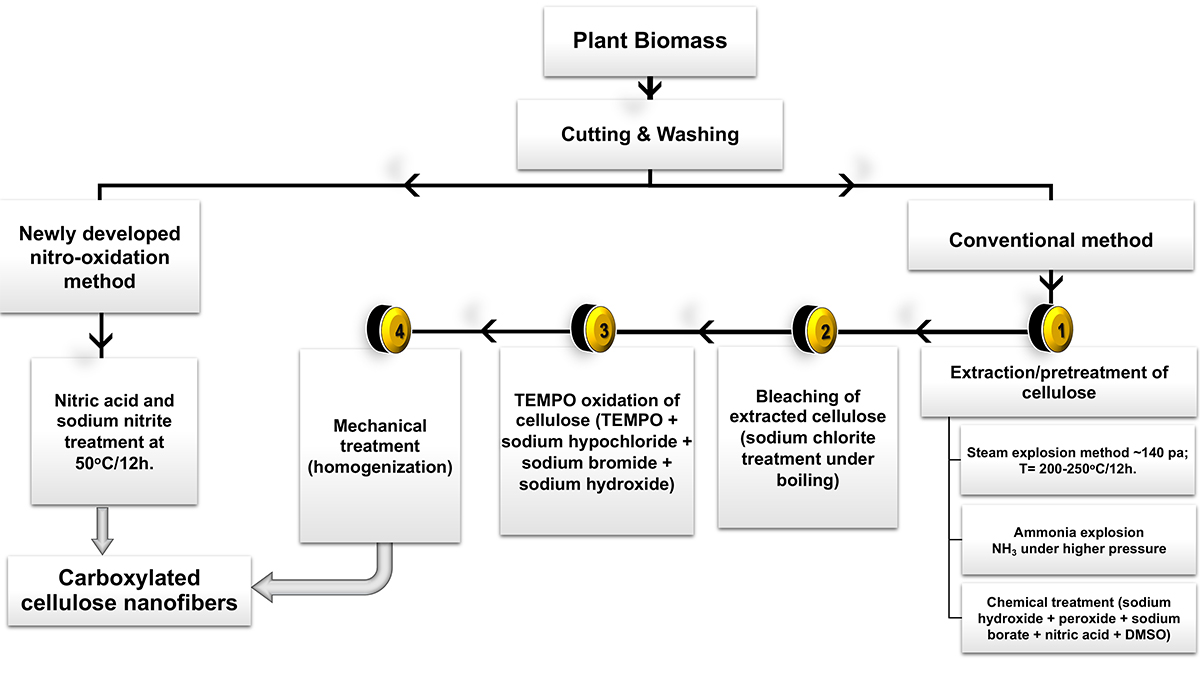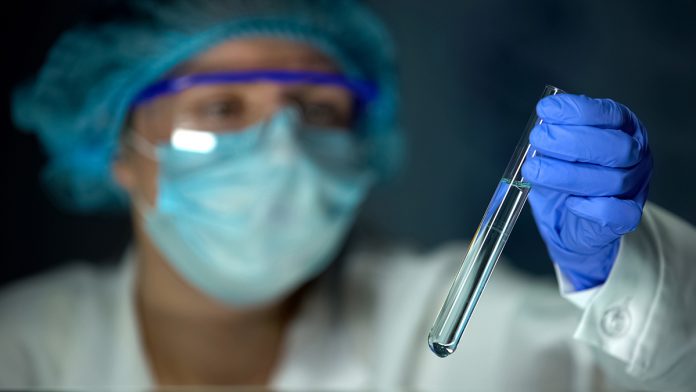Benjamin Hsiao, Distinguished Professor from Stony Brook University provides an excellent overview of an aspect of chemistry that concerns sustainable water purification solutions from underutilised biomass
The demand for low-cost water purification technologies has become a pressing issue due to rapid population growth in the world. At the turn of the last millennium, we already had over 1 billion people lacking access to safe drinking water and basic sanitation and nearly 4,000 children under the age of five dying each day(1). This situation has and will continue to worsen with the projected increase in population. Current water purification technologies, often relying on relatively expensive systems and synthetic materials, are non-sustainable for the poorest communities in the most water-distressed regions, where these communities are expanding the fastest. It is imperative that we break the paradigm of seeking solutions from existing technologies and instead explore new avenues for sustainable solutions that, as of yet, are unavailable.
We argue that one possible solution to tackle the problem of ‘affordable and sustainable’ is to use abundant and underutilised biomass as a source for extracting functional nanostructured cellulosic materials, or nanocellulose, for water purification through effective and low-cost means. Cellulose is the most abundant natural polymer on earth. Its annual production is in the order of 7.5 x 1010 tonne(2), which is about 200 times that of the annual plastic production in the world. Cellulose is naturally produced by all higher plants, as well as by a wide range of varying bacteria, algae and fungi, so virtually any plant (wooden or non-wooden) can be used to extract nanocellulose. However, the general consensus is that non-wooden plants usually have a lower lignin content than wooden plants, thereby making them easier to delignify with the simplest nanocellulose extraction process.
Biomass has already been used extensively in various water treatments. The most well-known example is activated carbon, which can be produced by a variety of physical (e.g. thermal) and chemical processes.(3) Activated carbon materials are usually in the mesoporous or particulate forms and they are effective adsorbents for removing many contaminants, such as volatile organic compounds (taste and odour), synthetic organic chemicals and even some mineral ions from water. From an economic standpoint, the denser the biomass components, such as hard wood and coconut tree nut, the more suitable a source for making activated carbon.

Recently, nanocellulose has also been shown as an effective sportive material with adsorption capacity often better than activated carbon for heavy metal removal from water because of the large surface area and functional sites.(4) It is, thus, sensible to consider the use of nanocellulose, extracted from underutilised biomass sources, such as agriculture residues and invasive species that are mostly non-wooden plants, for water remediation.
Furthermore, nanocellulose can be used as a barrier material to construct highly permeable water filtration membranes (e.g. microfiltration, ultrafiltration and nanofiltration) with superior properties (e.g. higher permeance and lower fouling) over commercial membranes.(5) Hereafter, we discuss three recent developments in nanocellulose technologies for water purification: nanocellulose extraction, nanocellulose adsorbents and nanocellulose membranes. Continuing advances in these technologies can lead to the realisation of our vision to provide low-cost and sustainable water purification solutions for the communities in most need.
Low-cost nanocellulose extraction
Nanocellulose, such as defibrillated cellulose nanofibers (CNF) and cellulose nanocrystals (CNC), as well as partially defibrillated microfibers, can be extracted from any biomass containing cellulose. Currently, commercially available nanocellulose extraction processes are mainly based on technologies developed for using wooden plants in papermaking. These processes involve multiple steps such as pulping to convert wood into cellulose fibres and mechanical/chemical treatments to defibrillate the fibres. Suitable chemical treatments are particularly important as the resulting nanostructured surface can carry negatively charged ions, ideal to adsorb many positively charged contaminants (such as toxic metals). Recently, a simple nitro-oxidation method has been demonstrated in our laboratory that can successfully prepare nanocellulose directly from raw biomass (jute, spinifex grass and bamboo) with a significant reduction in energy, water and chemical consumption.(6) (Figure 1). As the logistics of collection, transportation and decortication for biofuel production are being addressed to deal with agricultural residues, the developments of new and simple chemistries, such as nitro-oxidation which can extract nanocellulose from vastly underutilised non-wooden plants in a cost-effective manner, are definitely within our reach.

Nanocellulose adsorbents
Nanocellulose is an effective sportive material because the surface cellulose chains are chemically modified to include carboxylate groups (-COO-) making them highly attractive to bind to heavy metal ions (e.g. lead, cadmium, mercury, chromium and uranyl). The maximum adsorption capacity of nanocellulose for heavy metal ion removal can be several times higher than those of the most effective adsorbents reported in the literature. The metal adsorbed nanocellulose flocs can also be easily removed by simple and inexpensive gravity-driven microfiltration or decanting methods, thus reducing the significantly added cost issue related to the removal of secondary contaminants.
Besides toxic metal ions, nanocellulose is also effective to remove organic contaminants, including ammonium ions. This property is particularly useful for nitrogen removal, the number one issue in wastewater treatments and land-based aquaculture, where the ammonium adsorbed nanocellulose compound can be used directly as plant/crop fertilisers. Such an application will provide a new food-water-energy nexus to greatly improve the efficiency of the nitrogen cycle.
Nanocellulose membranes
Membrane technology remains the most energy-efficient method to remove contaminants (micron-size particles to angstrom size hydrated ions) from water in large scale. Recently, nanofiber membranes based on nanocellulose, have exhibited better filtration performance (e.g. higher flux and lower fouling) than commercial membranes in microfiltration, ultrafiltration and nanofiltration (Figure 2).(7) Better flux means less time to filter the same amount of water, which, in turn, decreases energy consumption and increases cost efficiency. Lower fouling means having the ability to minimise clogging of the membrane pores by foreign matter, such as oil, detergents and biomacromolecules during filtration.
We believe the current state of nanocellulose membrane technologies is only in its infancy stage and the field will grow rapidly as these technologies can take full advantage of the knowledge base on paper and packaging processes even though filtration membranes have very different property requirements from paper products, such as good wet strength, high porosity and controllable pore size. The combined nanocellulose membrane and adsorbent technologies not only can provide sustainable solutions to deal with many off-the-grid drinking water challenges, but also will offer new platforms to advance cost-efficient water treatment processes in large industrial scale.
References
1 WHO/UNICEF Joint Monitoring Programme on Water Supply and Sanitation (JMP), 2004.
2 A. D. French, N. R. Bertoniere, R. M. Brown, H. Chanzy, D. Gray, K. Hattori, W. Glasser, in Kirk-Othmer Encyclopedia of Chemical Technology, 5th Ed., Vol. 5 (Ed: R. Siedel), John Wiley & Sons, New York, USA, 2004, 473.
3 H. Marsh, F. R. Reinoso, Activated Carbon, Elsevier, Oxford, UK, 2006.
4 A. W. Carpenter, C. F. de Lannoy, M. R. Wiesner, Cellulose nanomaterials in water treatment technologies. Environ. Sci. Technol. 49, 5277–5287, 2015.
5 H. Y. Ma, B. S. Hsiao, B. Chu, Functional Nanofibers for Water Purification, in Functional Nanofibers and Applications (ed. Q. F. Wei), Chapter 15, Woodhead Publishing Series in Textiles, 2012.
6 P. R. Sharma, R. Joshi, S. K. Sharma, B. S. Hsiao, “A Simple Approach to Prepare Carboxycellulose Nanofibers from Untreated Biomass”, Biomacromolecules, 18(8), 2333-2342, 2017.
7 H. Y. Ma, C. Burger, B. Chu, B. S. Hsiao, Electrospun Nanofibers for Environmental Protection: Water Purification, Handbook of Fibrous Materials, Vol 2 (ed. J. Hu), Chapter 28, WILEY-VCH, Weinheim, 2019.
Please note: This is a commercial profile











